
Three of a Perfect Pair is the tenth studio album by English progressive rock band King Crimson, released on 23 March 1984 in the UK by E.G. Records. It is the group's final studio album to feature the quartet of Robert Fripp, Adrian Belew, Tony Levin and Bill Bruford, which broke up later that year, though all four would appear in the sextet lineup featured on THRAK in 1995.
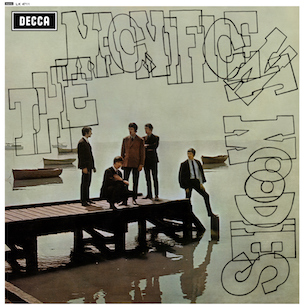
The Magnificent Moodies is the 1965 debut album by British rock band the Moody Blues, released on Decca Records.

Sleep Dirt is an album by Frank Zappa, released in January 1979 on his own DiscReet Records label, distributed by Warner Bros. Records. It reached No. 175 on the Billboard 200 album chart in the United States.

Läther is the sixty-fifth official album by Frank Zappa. It was released posthumously as a three-CD set on Rykodisc in 1996. The album's title is derived from bits of comic dialog that link the songs. Zappa also explained that the name is a joke, based on "common bastardized pronunciation of Germanic syllables by the Swiss."
Patrick James Woodroffe was an English artist, etcher and drawer, who specialised in fantasy science-fiction artwork, with images that bordered on the surreal. His achievements include several collaborations with well-known musicians, two bronze sculptures displayed in Switzerland and numerous books.
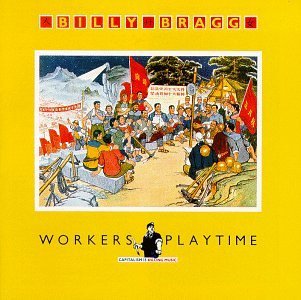
Workers Playtime is a 1988 album by Billy Bragg. Originally released on the Go! Discs label, it is his fourth release but third full-length album. It was reissued on compact disc in September 1996 on the Cooking Vinyl label before being remastered, expanded and reissued in 2006 on Cooking Vinyl in the UK and on the Yep Roc label in the United States.

PXR5 is the ninth studio album by the English space rock group Hawkwind, released in 1979. It reached No. 59 on the UK album charts.
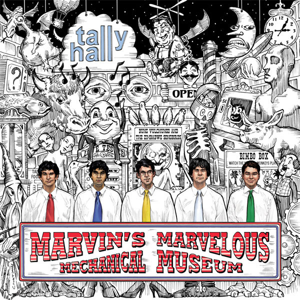
Marvin's Marvelous Mechanical Museum is the debut studio album by American rock band Tally Hall, originally released on October 24, 2005. Their previous recordings were all independently produced and distributed demos. All of the tracks on the album are finished versions of their demo tracks featured in Complete Demos, with the exception of "Haiku," which is a completely new song. The album gets its name from a museum of mechanized curiosities that is located in Farmington Hills, Michigan. The album's cover art is also based on a number of machines located within the museum.

Greenslade were an English progressive rock band, formed in the autumn of 1972 by keyboard player Dave Greenslade and bassist Tony Reeves, with keyboardist Dave Lawson and drummer Andrew McCulloch.

David John Greenslade is an English composer and keyboard player. He has played with Colosseum from the beginning in 1968 until the farewell concert in 2015 and also from 1973 in his own band, Greenslade, and others including If and Chris Farlowe's Thunderbirds.

Greenslade is an eponymous studio album by British progressive rock band Greenslade, released on the Warner Bros. label in 1973, and their first album. The artwork for the album cover is by Roger Dean. The album has seven tracks comprising six songs and one instrumental with a vocal track.

The Sentinel is the debut album by British progressive rock band Pallas. Released in February 1984, it is a concept album with lyrics based upon Cold War themes, using a futuristic version of the tale of Atlantis as a metaphor for a technologically advanced society brought to the brink of destruction. The cover artwork is by Patrick Woodroffe.

Burning for You is the eleventh studio album by English band Strawbs, with cover art by Patrick Woodroffe.
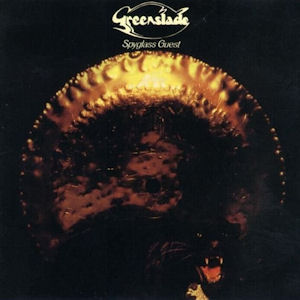
Spyglass Guest is the third studio album by British progressive rock band Greenslade, released in 1974. It is their most commercially successful album to date, having reached number 34 in the UK Albums Chart. It was the final recording bassist Tony Reeves made with the group, leaving Greenslade shortly after the LP was completed.

Greatest Hits is a compilation album by the progressive rock band the Moody Blues, released in 1989. The band recorded new versions of "Isn't Life Strange" and "Question" with orchestration by the London Symphony Orchestra. The arrangements were overseen by Anne Dudley, who also produced the recordings with Justin Hayward and John Lodge. In 1990, only a year after its original release, the album was re-released as Legend of a Band: The Story of the Moody Blues with different artwork to coincide with the release of the home video documentary of the same name.

Crystal Ball is a box set by American recording artist Prince. It includes Crystal Ball, the artist's twentieth studio album, which is a three-disc set of "previously bootlegged" material, together with a fourth disc, The Truth, the twenty-first studio album by Prince.
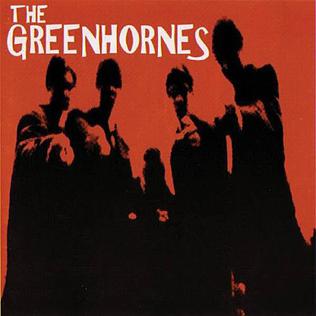
Gun for You is the debut album by the American band the Greenhornes, released in 1999.

Time and Tide is the fourth studio album of the British progressive rock band Greenslade, released in 1975 on Warner Bros. Records. The artwork for the album cover is by Patrick Woodroffe. The album was released in the US on the Mercury Records label.

Cactus Choir is the first solo album by British keyboardist Dave Greenslade, released in 1976 soon after the disbandment of his own eponymous band, Greenslade. His Greenslade bandmate Tony Reeves also plays on half of the album's tracks. The artwork for the cover is by Roger Dean.
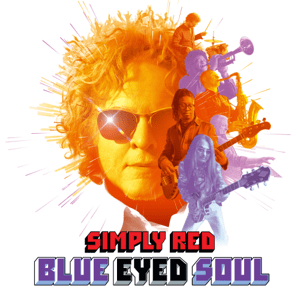
Blue Eyed Soul is the twelfth studio album by British pop group Simply Red. The album was released on 8 November 2019 by BMG.


















